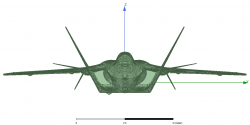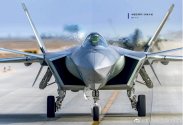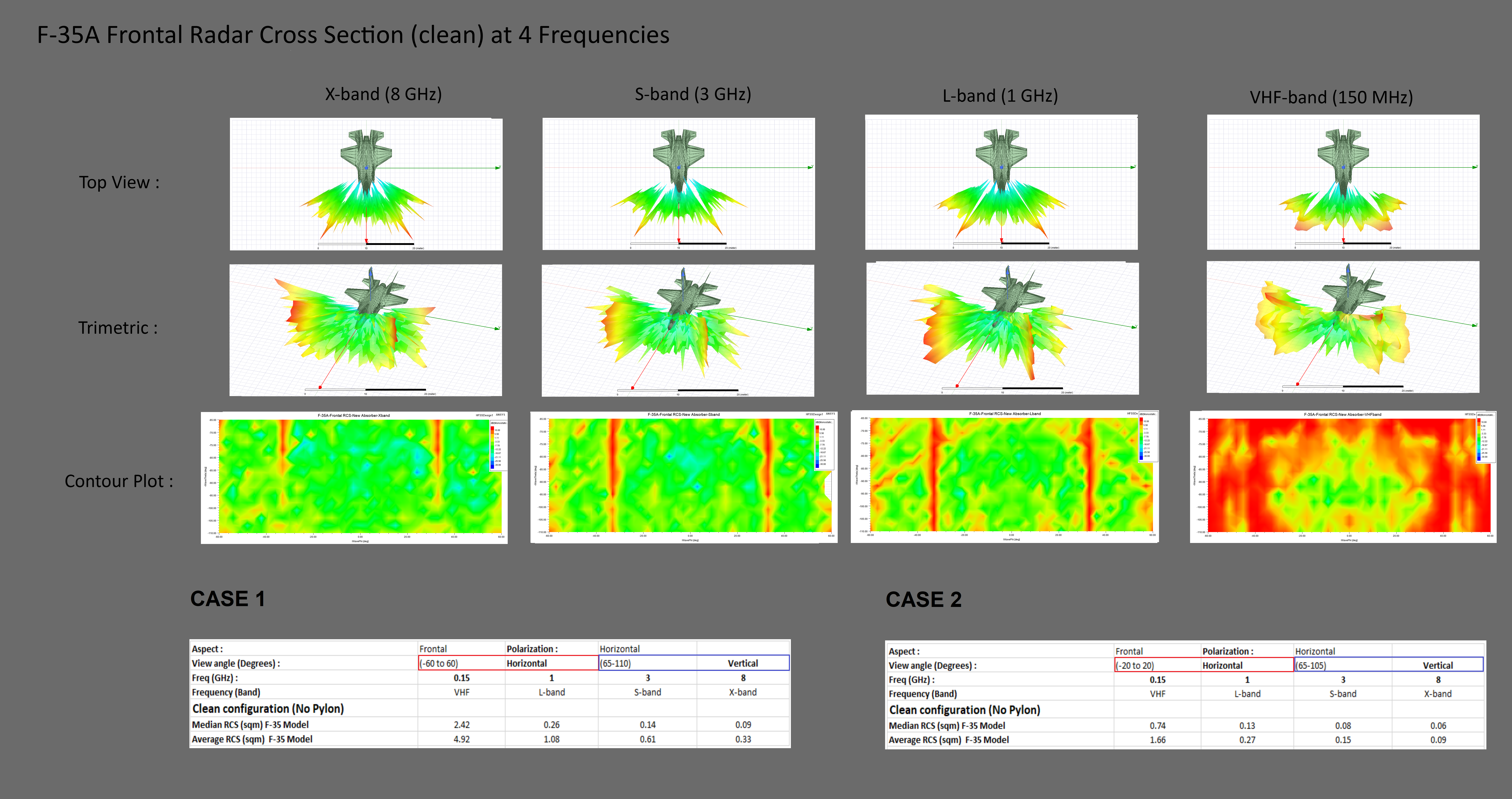You are using an out of date browser. It may not display this or other websites correctly.
You should upgrade or use an alternative browser.
You should upgrade or use an alternative browser.
J-20 5th Generation Fighter VII
- Thread starter siegecrossbow
- Start date
- Status
- Not open for further replies.
so J-20 is better in case 1 (-60 to 60), and F-35 is better in case 2 (-20 to 20)...How about this? 3 fighters side by sideView attachment 102693
superisingly, there are cases that Su-57 performs really well despite being the worst in most cases
Wouldn’t read too much into these models.so J-20 is better in case 1 (-60 to 60), and F-35 is better in case 2 (-20 to 20)...
superisingly, there are cases that Su-57 performs really well despite being the worst in most cases
right, this is just something for us amateurs to get a sense of RCS of these aircraft a little better. The modeling themselves are not perfect and we really have no idea of how good the stealth layers are. Also, doesn't consider emission control and things like that. I do find it interesting that F-35 appears to be emphasizing the angles directly facing it more than J-20 is.Wouldn’t read too much into these models.
I concur.Wouldn’t read too much into these models.
Just to drive the point home further, compare these two imagesWouldn’t read too much into these models.

and

The model bears a vague resemblance to the aircraft we've come to know and love as the J-20, but vague resemblance is about where it ends. Just as an example, the ventral strakes connect to the body completely wrong on the model, and if something that obvious is wrong then one shouldn't trust any of the fine details. Everything about it looks off.
I had been recently bugging him to do the analysis. Some of his other work is quite interesting. Anyway, it's something useful that we will find in public domain. Ofcourse it isn't perfect but if anyone got better analysis they should raise their hands.btw, someone did a lot work in RCS analysis of j-20. Keep in mind these figures are posted without considering the RAM layer. He clearly stated how he did the simulation, so you can make your own judgement of these things
Here is the end result of J-20 in his simulation

vs F-35

Based on his analysis, you'd see that average RCS of J-20 faired the worst vs F-35A at X-band. From VHF to L band, the numbers look quite comparable. It seems like F-35A is also very much focused on just S to X band radar directly in front of its nose. Its stealth gets a lot worse as frequency decreases and angles are further away from the center.
I had been recently bugging him to do the analysis. Some of his other work is quite interesting. Anyway, it's something useful that we will find in public domain. Ofcourse it isn't perfect but if anyone got better analysis they should raise their hands.
I think that while they numbers are certainly is not representative of the real world aircraft, the efforts taken by the author to do so can still be appreciated.
the number maybe inaccurate, but should represent some level of truth, i general take it as J-20 has roughly same level of steath level as F-35, and Su-57, despite it's the worst, but not as horrible as i thoughtWouldn’t read too much into these models.
I think in general there's some value with this kind of exercise, but where I hesitate to go as far as "represent some level of truth" is that 1) accuracy of simulations are going to be pretty sensitive to model roughness, 2) as stealth materials and modeling has gotten better general shaping has become less deterministic in assessing RCS capability. It's still the principal factor, but it accounts for less than it used to.the number maybe inaccurate, but should represent some level of truth, i general take it as J-20 has roughly same level of steath level as F-35, and Su-57, despite it's the worst, but not as horrible as i thought
Yeah I don't think the effort itself should be dinged. Just cautioning how people choose to interpret it.I think that while they numbers are certainly is not representative of the real world aircraft, the efforts taken by the author to do so can still be appreciated.
- Status
- Not open for further replies.




